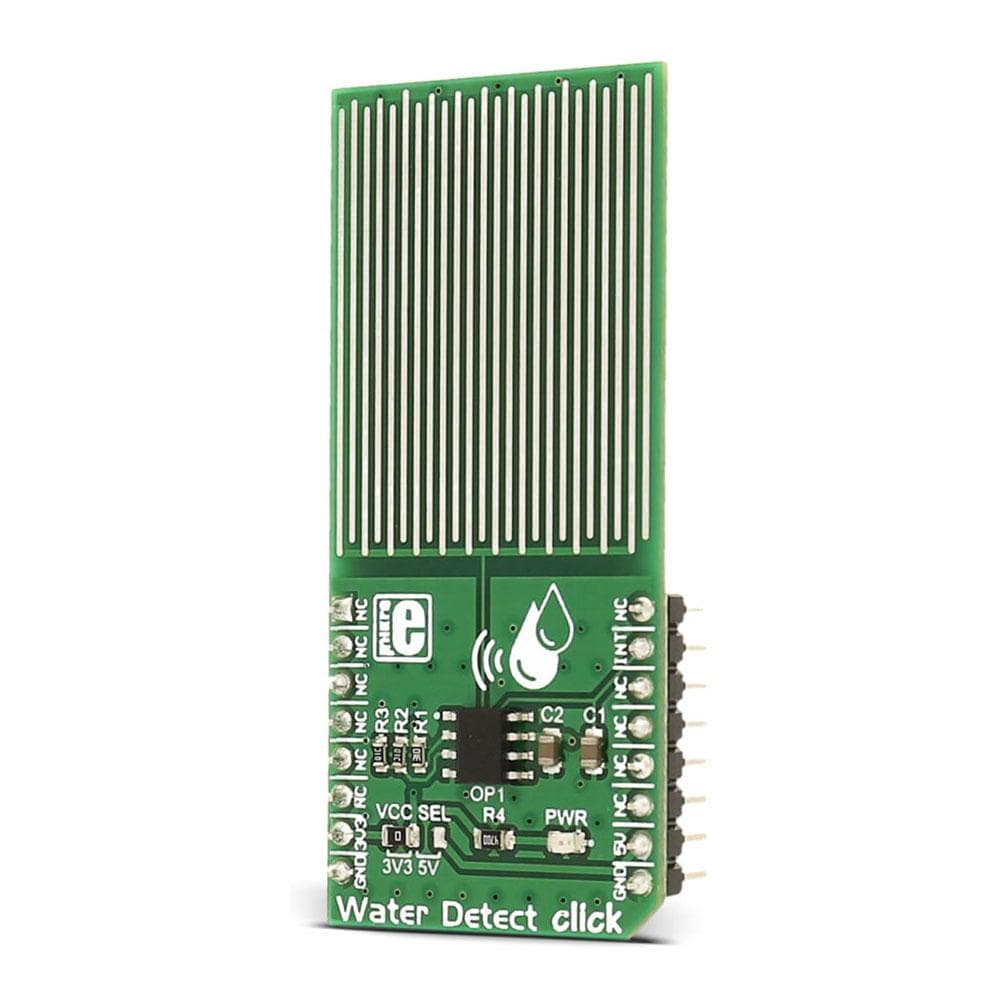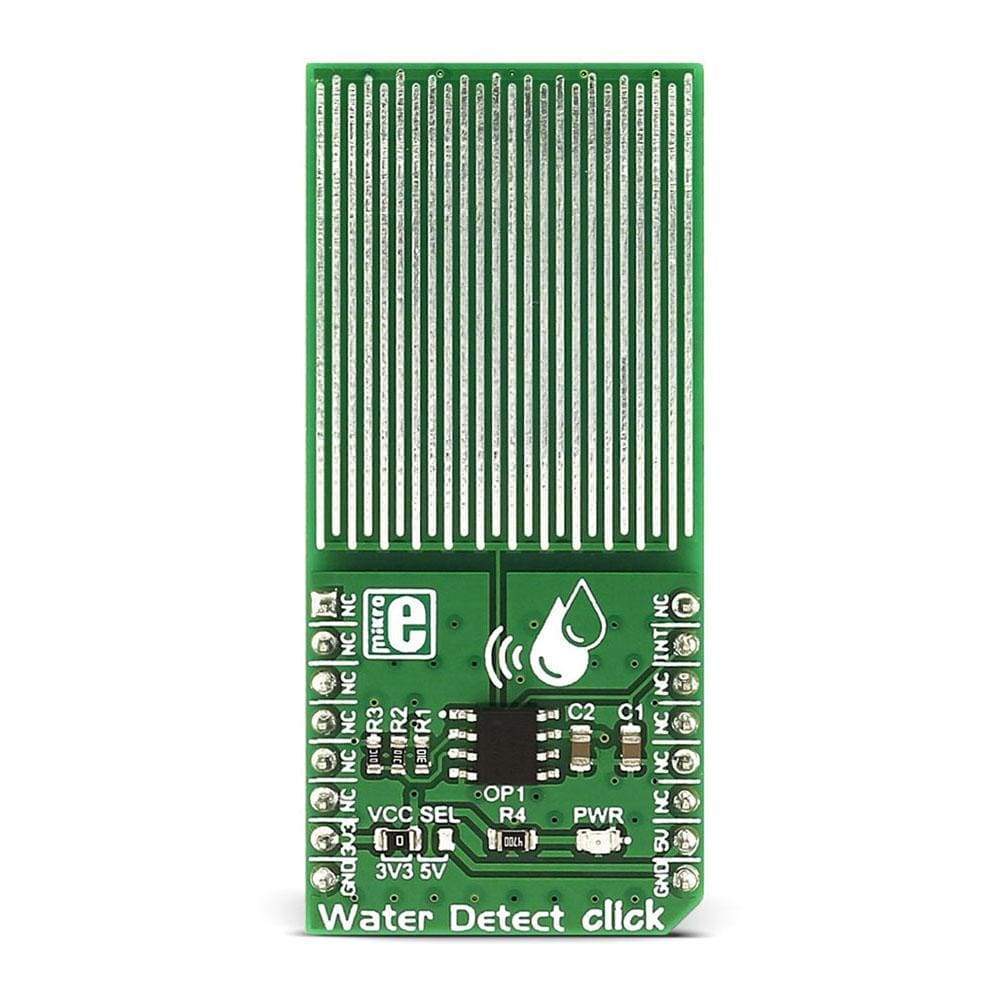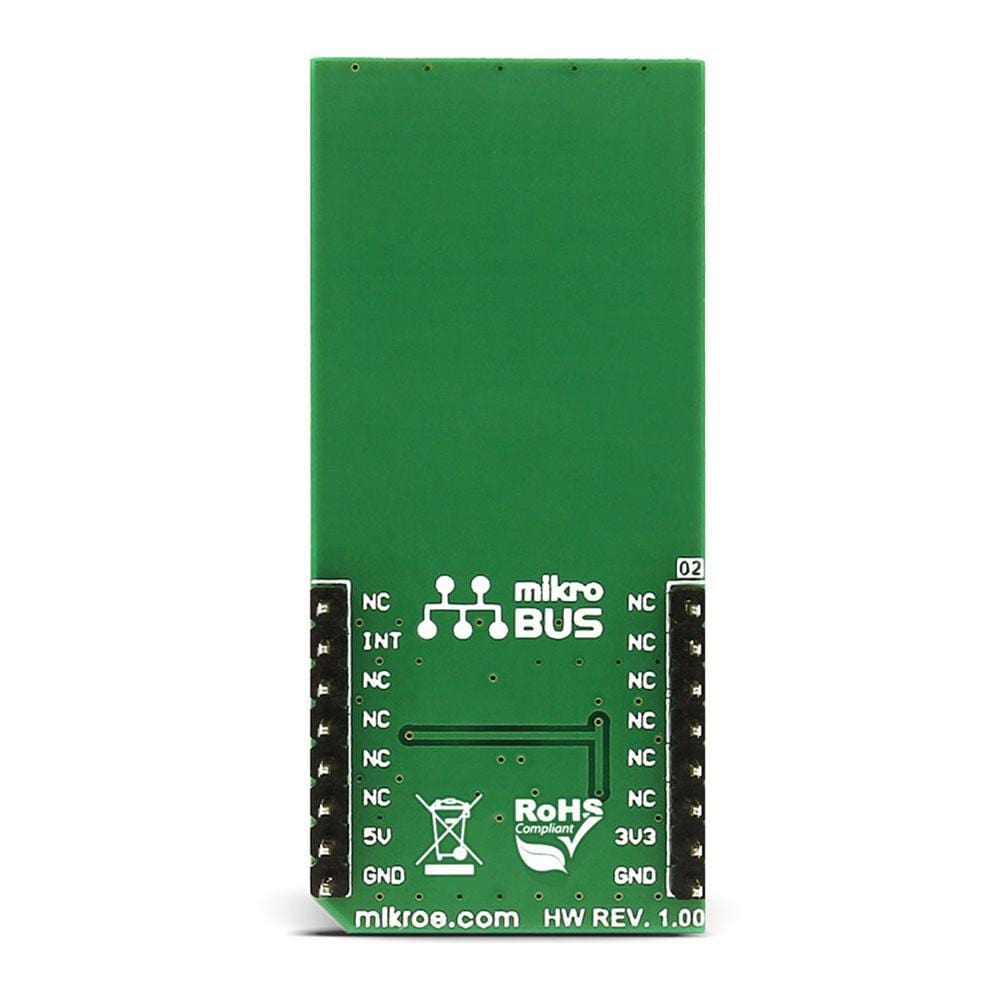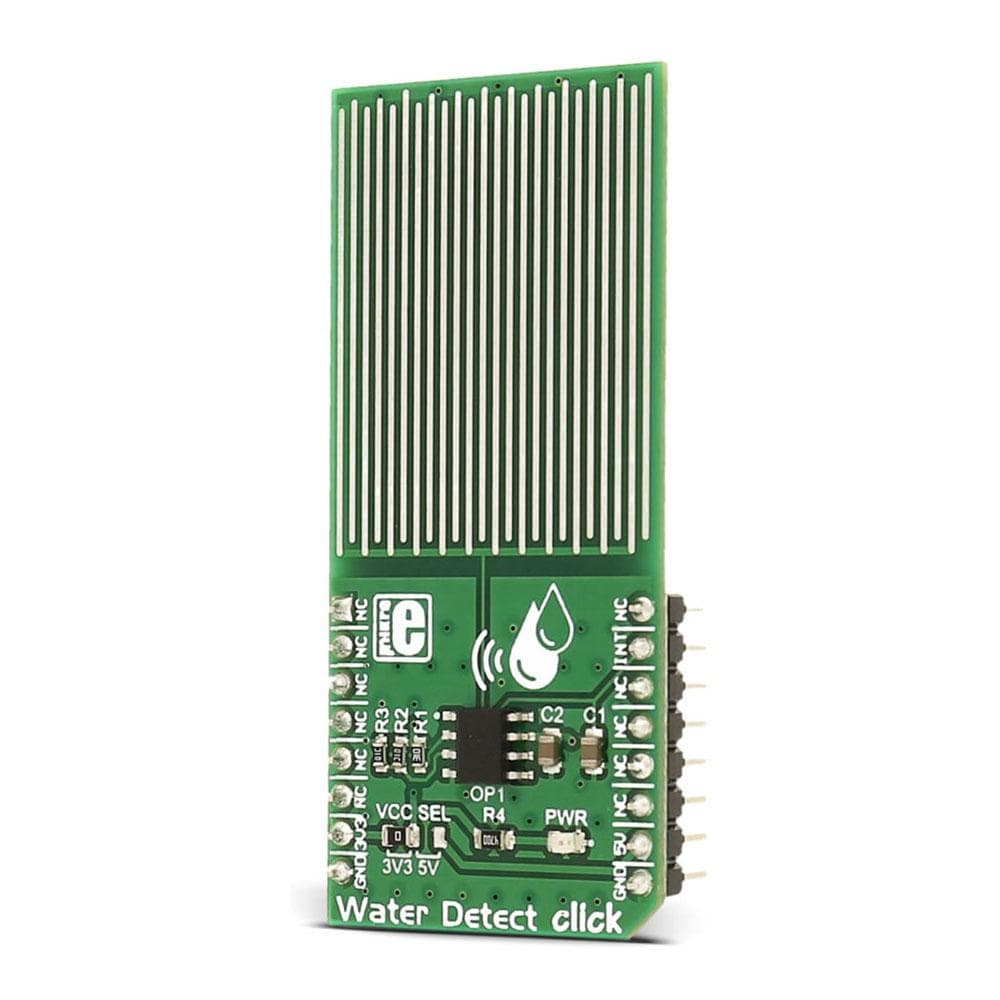
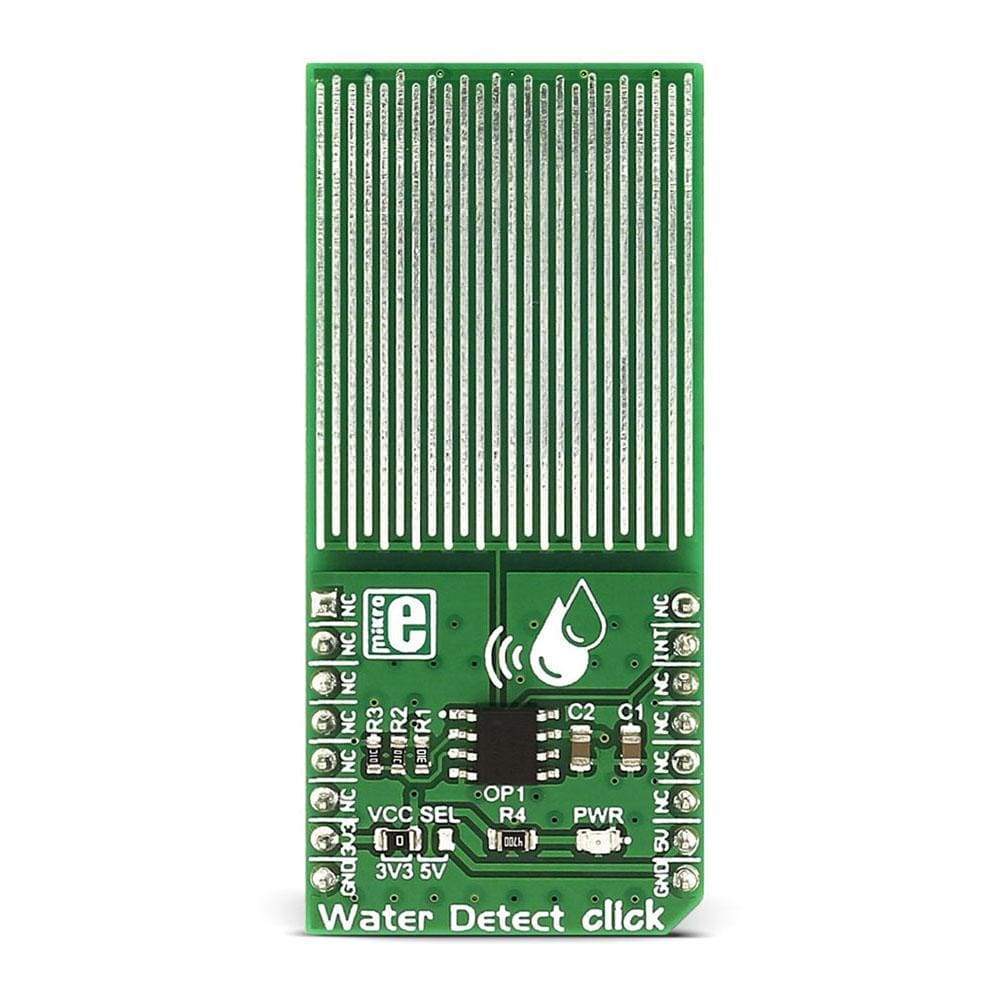
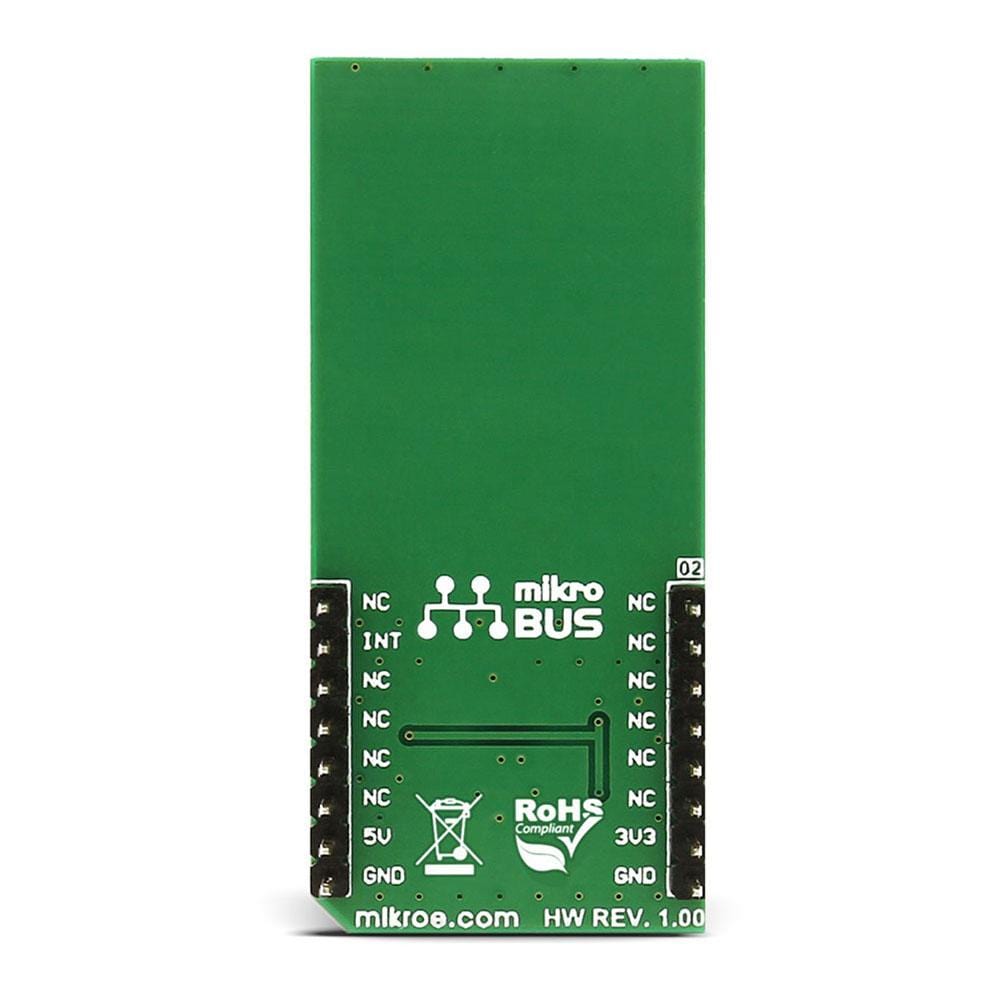
Overview
Avoid plumbing and water leakage disasters!.
The Water Detect Click Board™ is used for detecting water and other electro-conductive liquids. If the detection area is wet the output of Microchip's MCP606 CMOS op-amp will go positive, signaling the presence of liquid.
The Water Detect Click Board™ can be used as a household flood alarm sensor, rain detector for smart buildings or for water tanks that act as a limit switch for a pump.
Downloads
The Water Detect Click Board™ is used for detecting water and other electroconductive liquids. If the detection area is wet the output of Microchip's MCP606 CMOS op-amp will go positive, signaling the presence of liquid.
The Water Detect Click Board™ can be used as a household flood alarm sensor, rain detector for smart buildings or for water tanks that act as a limit switch for a pump.
You could use it on one of our clicker 2 development boards, with GSM 4 click, or any other from the wireless range, and create a home flood alarm. Any time the Water Detect Click Board™ detects water it will send you an SMS.
How Does The Water Detect Click Board™ Work?
The Water Detect Click Board™ works by comparing the voltage of two resistor dividers using the MCP606 comparator. The resistor divider (made of R2 and R3) is used as a voltage reference.
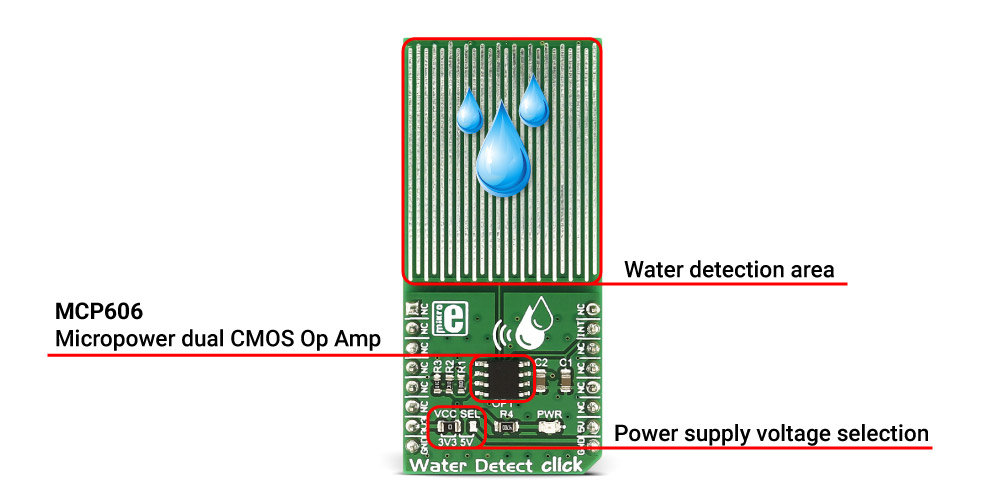
The MCP606 functions as a comparator on this click board™.
The second divider is made of resistor R1 and the sensory area. When the sensory area is dry, it's resistance is near infinite, and the voltage applied to the inverting terminal of the comparator equals VCC.
Since the voltage of the reference divider connected to the non-inverting input is VCC/2, the output of the comparator is at zero voltage. Once the liquid is present at the sensory area, it's resistance drops and pulls the voltage on the inverting input of the comparator toward zero volts. Once this voltage falls below VCC/2, the comparator output swings toward VCC signaling the presence of liquid. The comparator output is tied to the INT pin on the mikroBUS™ header.
The water detection area is actually made of exposed conducting wires - simple but effective technology.
SPECIFICATIONS
| Type | Miscellaneous |
| Applications | Household flood alarm sensor, rain detector for smart buildings or water tank fill sensor, automated watering systems, etc. |
| On-board modules | Water detection area, MCP606 comparator |
| Key Features | The water detection area is actually made of exposed conducting wires - simple but effective technology |
| Interface | GPIO |
| Compatibility | mikroBUS |
| Click board size | L (57.15 x 25.4 mm) |
| Input Voltage | 3.3V or 5V |
PINOUT DIAGRAM
This table shows how the pinout of the Water Detect Click Board™ corresponds to the pinout on the mikroBUS™ socket (the latter shown in the two middle columns).
| Notes | Pin |  |
Pin | Notes | |||
|---|---|---|---|---|---|---|---|
| NC | 1 | AN | PWM | 16 | NC | ||
| NC | 2 | RST | INT | 15 | INT | MCP606 output (water detect) | |
| NC | 3 | CS | TX | 14 | NC | ||
| NC | 4 | SCK | RX | 13 | NC | ||
| NC | 5 | MISO | SCL | 12 | NC | ||
| NC | 6 | MOSI | SDA | 11 | NC | ||
| Power supply | +3.3V | 7 | 3.3V | 5V | 10 | +5V | Power supply |
| Ground | GND | 8 | GND | GND | 9 | GND | Ground |
JUMPERS AND SETTINGS
| Designator | Name | Default Position | Default Option | Description |
|---|---|---|---|---|
| VCC SEL | VCC SEL | Left | 3.3V | Power Supply Voltage Selection between 3.3V/5V, left position 3.3V, right position 5V |
| General Information | |
|---|---|
Part Number (SKU) |
MIKROE-2786
|
Manufacturer |
|
| Physical and Mechanical | |
Weight |
0.022 kg
|
| Other | |
Country of Origin |
|
HS Code Customs Tariff code
|
|
EAN |
8606018711642
|
Warranty |
|
Frequently Asked Questions
Have a Question?
Be the first to ask a question about this.

